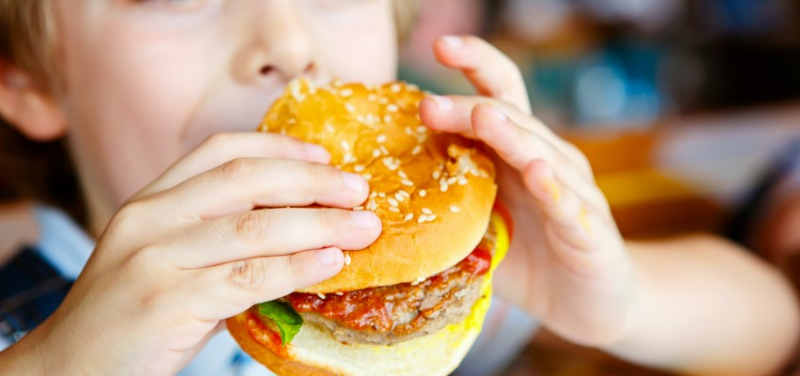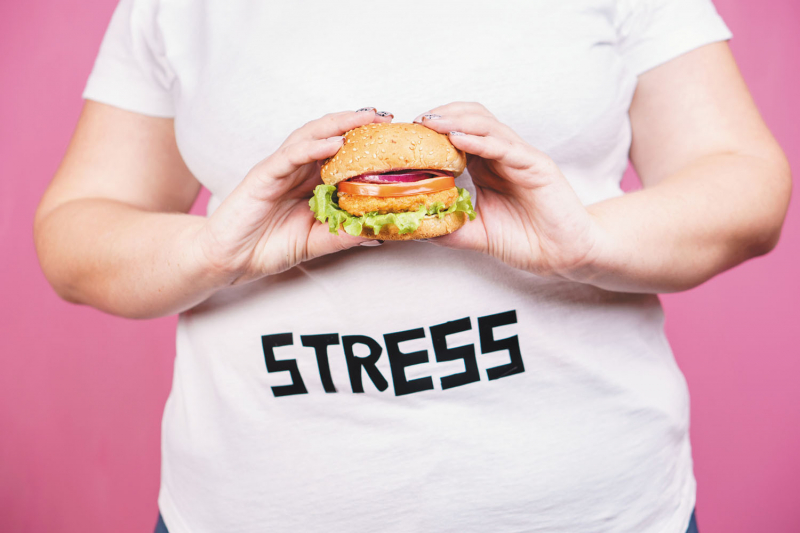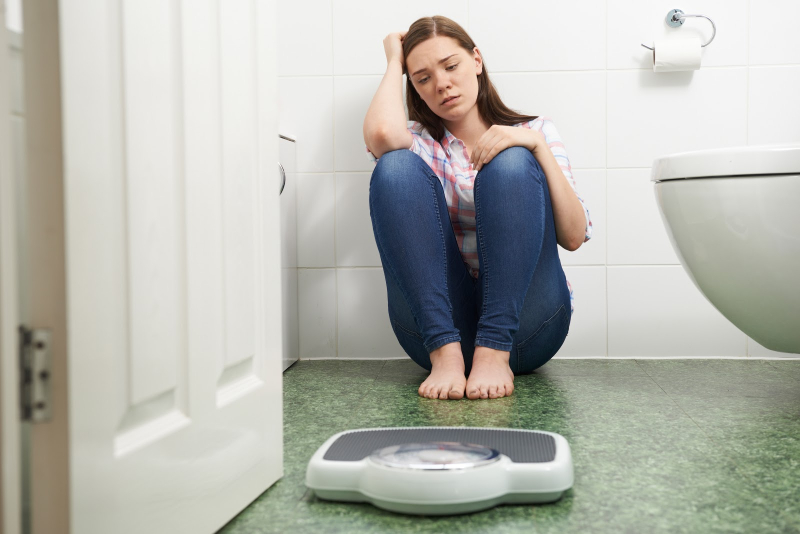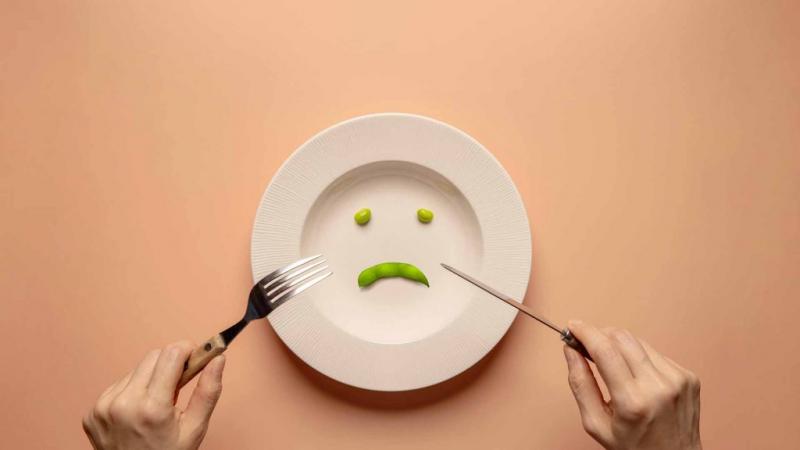Top 10 Types of Eating Disorders and Their Symptoms
It is estimated that 8 million people in the United States suffer from an eating disorder, with many of them never getting an official diagnosis. Eating ... read more...disorders can lead to serious consequences such as muscle fatigue, loss of fertility, renal failure, and even death. Below are some Types of Eating Disorders and Their Symptoms you can refer to have more information!
-
Anorexia nervosa, or simply anorexia, is a common eating disorder that affects 0.9% to 4.3% of women and 0.2% to 0.3% of men in Western countries at some point throughout their lives. Anorexics have a body mass index (BMI) of less than 17.5, and they live with a dread of gaining weight and an uncontrollable desire to lose weight.
Anorexia has a wide range of symptoms that can be life-threatening. Amenorrhea, for example, is a problem in which women's periods stop and can eventually lead to infertility. Anorexia can also lead to psychological problems including low self-esteem, anxiety, and sadness. People with anorexia frequently drastically restrict their food intake to avoid weight gain or to maintain their weight loss. They may restrict their calorie intake by vomiting after meals or abusing laxatives, diet aids, diuretics, and enemas. They could also try to shed weight by over-exercising. No matter how much weight is dropped, the person is still afraid of gaining it again.

Anorexia Nervosa 
Anorexia Nervosa -
Bulimia nervosa is a serious eating disorder that resembles anorexia in certain ways. Bulimia nervosa patients are prone to consuming huge amounts of food in a short period of time. Bulimia patients may use a variety of methods to burn calories and avoid weight gain. After bingeing, for example, you may self-induce vomiting or abuse laxatives, weight-loss supplements, diuretics, or enemas. Alternatively, you can utilize alternative methods to burn calories and avoid weight gains, such as fasting, strict diets, or intense activity. This cycle can repeat itself numerous times a day in more severe cases of bulimia nervosa.
Bulimia nervosa patients are known to have an electrolyte imbalance, which can lead to cardiac arrest and, in extreme circumstances, death. A painful (or ruptured) throat, muscular weariness, low blood pressure, dehydration, and dizziness are some of the most typical symptoms. Fortunately, effective treatment, on the other hand, can help you feel better about yourself, change your eating habits, and reverse serious complications.

Bulimia nervosa 
Bulimia nervosa -
Binge eating disorder (BED) is a type of eating problem that is now officially recognized. It affects around 2% of the world's population and can lead to other health problems associated with food, such as high cholesterol and diabetes.
Adults suffer from binge eating disorders, which is one of the most common eating disorders. BED sufferers, like bulimia people who suffer, are prone to excessive overeating in physically and mentally hazardous ways. People with BED often continue to eat even after they are uncomfortable full during a binge-eating episode. BED has been related to obesity, poor body image, low self-esteem, and depression, among other health issues. Cognitive-behavioral therapy, interpersonal psychotherapy, dialectical behavior therapy, weight reduction therapy, and medication are all options for treatment. Some people may only need one sort of treatment, while others may need to experiment with numerous combinations until they find the appropriate match.

Binge Eating Disorder (BED) 
Binge Eating Disorder (BED) -
Purging disorder is an eating disorder in which people engage in "purging" behavior in an attempt to lose weight or change their body shape. Self-induced vomiting, the overuse of laxatives or drugs, extreme exercise, and fasting are all examples of purging. Purging disorder is a recognized eating disorder that is classified in "Other Specified Feeding or Eating Disorder".
Purging disorder, on the other hand, has symptoms that are similar to bulimia, such as cavities, dehydration, and muscular weariness. Purging disorder, like other eating disorders, is generally induced by a perceived pressure to be slim, leading to a person's dissatisfaction with their body. Purging disorder treatment varies from person to person. Some people may benefit from inpatient treatment and recovery programs, while others may choose outpatient therapy.

Purging Disorder 
Purging Disorder -
Pica is an eating disorder in which a person craves non-food things. Pica is most commonly seen in children. When a youngster consumes dirt or sand from the ground, for example, he or she may be diagnosed with pica. Pica is also commonly identified in pregnant women and is characterized by a desire for particular nutrients (such as minerals found in dirt), according to research.
The amount of harm caused by pica is frequently determined by the substance ingested. Pica patients, for example, may consume soap, drywall, stone cobbles, nails, or even lead pieces. An iron deficiency can cause this type of eating disorder, which can be remedied by simply adjusting your diet. However, psychological factors are more necessary need to change.

Pica 
Pica -
Rumination disorder, also known as rumination syndrome, is an eating situation in which patients regurgitate their meals after they have eaten them, frequently repeatedly and unintentionally. This might happen anywhere from 30 seconds to an hour after eating the food. Because the meal hasn't yet been digested by the stomach, it typically tastes normal and non-acidic.
Unlike most eating disorders, the cause of rumination disorder is unknown at this time, while it is thought to be induced by both physical and psychological factors, including depression. Rumination disorder is characterized by bad breath, stomach discomfort, nausea, and constipation. To stop regurgitation, the most common treatment for rumination syndrome is behavioral therapy. Diaphragmatic breathing is the most common behavioral treatment for rumination syndrome.

Rumination Disorder 
Rumination Disorder -
ARFID, formerly known as a selective eating disorder, is a food intake condition in which patients refuse to consume certain foods. The unwillingness to consume a certain type of food might be based on its texture, appearance, smell, or even the brand.
ARFID is not driven by a compulsive need to reduce weight or a negative body image like other eating disorders. As a result, most persons with ARFID maintain a healthy diet and body weight. Even though several eating disorder types are more common in women, a study indicated that ARFID is more commonly diagnosed in boys. According to another study, people with autism are more likely to obsessively avoid certain types of food.

Avoidant/Restrictive Food Intake Disorder (ARFID) 
Avoidant/Restrictive Food Intake Disorder (ARFID) -
People with NES consume at least 25% of their daily calorie intake at night, even though they normally follow a circadian rhythm and eat during the day. They may wake up several times during the night specifically to eat, and they are more likely to be obese. It also raises the risk of developing health issues such as diabetes and high blood pressure.
If you have NES, you may think that if you don't eat, you won't be able to go asleep. You could feel helpless in the middle of the night when you have a strong need to eat. Many persons with NES suffer from sadness or anxiety, which is exacerbated at night. Healthcare practitioners frequently propose a variety of therapy to help persons with NES. Antidepressant drugs, cognitive behavioral therapy, and sleep and eating cycle correction procedures are among them.
Night Eating Syndrome (NES) 
Night Eating Syndrome (NES) -
Orthorexia Nervosa is an eating disorder in which patients obsess about consuming healthy foods. Even while eating healthy is beneficial, persons with Orthorexia Nervosa obsess over it to the point that it does more harm than benefit. It is distinct from other eating disorders in that it is not driven by a compulsive need to reduce weight or look skinny.
People with this eating disorder may assume that a certain food is related to a disease, such as cancer, and hence exclude it from their diet entirely. If you have Orthorexia Nervosa, this exaggerated response can lead to severe malnutrition. People with this eating disorder are known to see food as primarily a source of nutrition rather than pleasure. This can lead to a diet deficient in critical nutrients such as fats, which are necessary for good health.

Orthorexia Nervosa 
Orthorexia Nervosa -
The word diabulimia is a combination of the words diabetes and bulimia. Diabetes is a disease that affects how your body absorbs sugar. Bulimia is an eating disorder in which you overeat and then purge it by vomiting or taking a laxative to lose weight. Diabulimia is a word used to describe someone with type 1 diabetes who skips insulin doses in order to reduce weight.
This will cause weariness, increased thirst and hunger, difficulty to focus, and an electrolyte imbalance in the short term. The symptoms, on the other hand, might get more severe over time. DiaBulimia can cause major renal damage, delayed puberty, cardiac issues, and even death in people who have it for a long period.

DiaBulimia 
DiaBulimia































